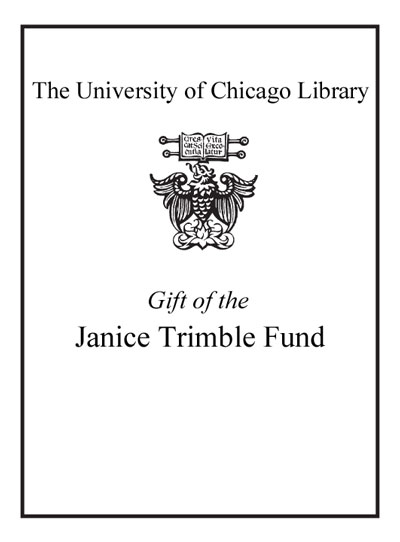Review by Choice Review
Eighteenth-century literary studies have always been interdisciplinary: understanding Pope and Swift entails understanding garden history and developments in astronomy. Distinguished historian of literary and art theory and of the novel, Lipking (emer., Northwestern) has done enough homework to write a book about the scientific revolution that passes muster with such discerning of historians of science as Peter Dear. The book is not, as it first seems, a connected account of the role of visual imaging in science; rather, Lipking offers a series of meditations on individual figures from Galileo and Kepler to Hooke and Newton. The result is uneven: most readers will already know what Lipking has to say about Galileo's Siderius Nuncius and Newton, but his chapter on Descartes is a masterpiece of synthesis, perhaps the best brief account yet of Descartes's motivations in doing natural philosophy, and Lipking's account of Hooke is almost as good; Robert Fludd and Thomas Browne round out the complex picture. England and physics dominate (one wishes for more on chemistry, biology, and Leibniz, but that would have meant a different, and much longer, book). Lipking's audience is not historians of science but students of literature and even, given his admirable clarity, general readers, for whom he has provided a thoroughly accessible intellectual feast. Summing Up: Essential. All readers. --Douglas Lane Patey, Smith College
Copyright American Library Association, used with permission.
Review by Library Journal Review
Some believe that the scientific revolution beginning in early 17th-century Europe demystified and rationalized existence, undermined metaphysical certitude, and took all the joy, magic, and imagination out of the world-the universe became solely material. Not so, argues Lipking (English, Northwestern Univ.; Samuel Johnson: The Life of An Author), who posits that the scientific revolution was more complicated than the standard narrative of progress and dispelling of superstitions. Imagination, theology, and a sense of wonder, the author explains, propelled the work of natural philosophers such as Rene Descartes, Galileo, and Isaac Newton. While tensions between religion and science and arguments about the loss of meaning in the world were obvious as early as the 1600s and continue today (witness modern scientists such as Carl Sagan in Pale Blue Dot and Richard Dawkins in Unweaving the Rainbow attempting to dispel this perception), Lipking supports his thesis admirably by blending literary analysis of period texts with the philosophers' own writings. He demonstrates that there was no clean line of progress and that the world was never turned fully mechanistic by any of these great scientists. VERDICT Substantial and erudite, this title will appeal to scholarly readers studying the philosophy and history of science.-Evan M. Anderson, Kirkendall P.L., Ankeny, IA (c) Copyright 2014. Library Journals LLC, a wholly owned subsidiary of Media Source, Inc. No redistribution permitted.
(c) Copyright Library Journals LLC, a wholly owned subsidiary of Media Source, Inc. No redistribution permitted.
Review by Choice Review
Review by Library Journal Review

